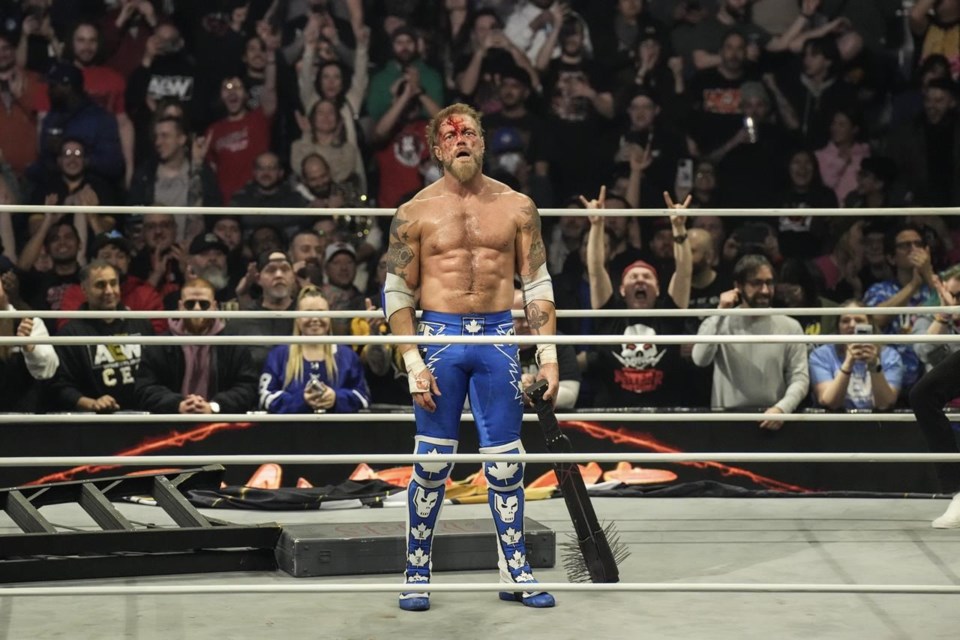Adam Copeland knows what it's like to have to recover from severe injuries or operations.
As one of the most accomplished professional wrestlers of the past 20 years, the product of Orangeville, Ont., billed from Toronto, has had a laundry list of aches and pains for years. But when Copeland, formerly known as Edge, was forced to retire because of cervical spinal stenosis in 2011, he slowly got out of shape.
"I was doing the occasional acting gig and I was enjoying life but one night I carried the girls upstairs who at that stage were a combined weight of maybe 60 pounds, all told, maybe 70," said Copeland in a phone interview on Monday. "I got to the top of stairs, and I was like, 'whoa, I'm really tired, I'm way too tired for what I did.'
"I got the kick in the butt to get back in shape, in the proper shape, at least for where I want to be and for wanting to be around these girls for a long time because I'm an older dad."
Planking became the foundation of Copeland's workout routine, putting a badly needed focus on his core and back. When his longtime friend, tag-team partner, and archrival Jay Reso — known in the ring as Christian Cage — saw the results, he also became a believer in the power of planks.
But with their litany of injuries, doing standard planks on carpets or yoga mats just wasn't realistic for either Copeland or Reso.
"We're both nearing 50, we've both had multiple injuries," said Copeland. "There's got to be a way to make this easier on our joints so that we can still do the planking, still get all the benefits, stronger core which in turn has a stronger lower back, which in turn is less stress on your knees, etc, etc."
The former tag-team partners started coming up with design ideas, tweaking their ideas, and creating a purpose-built platform called Pure Plank that includes non-slip handles, a soft rubber pad, a digital timer, and a smartphone holder to make planking as easy as possible, especially for people who are recovering from injury or surgery.
"More than anything, I'm at the stage in life where I'm not looking to some kind of cash grab or anything, it was really like, 'hey, this might be able to help," said Copeland. "Because if it can help me then maybe it can help some other folks too."
Planking worked for both Copeland and Reso as they were both eventually medically cleared to compete after lengthy stretches away from wrestling. Both are now in All Elite Wrestling, a promotion based out of Jacksonville, Fla., where they are now at odds with each other, feuding over the TNT championship.
Most recently, Copeland won the belt in an "I Quit" match on March 20 at Toronto's Coca-Cola Coliseum on Dynamite, AEW's flagship show.
"I was very, very happy with that one," said Copeland.
This report by The Canadian Press was first published May 7, 2024.
John Chidley-Hill, The Canadian Press


